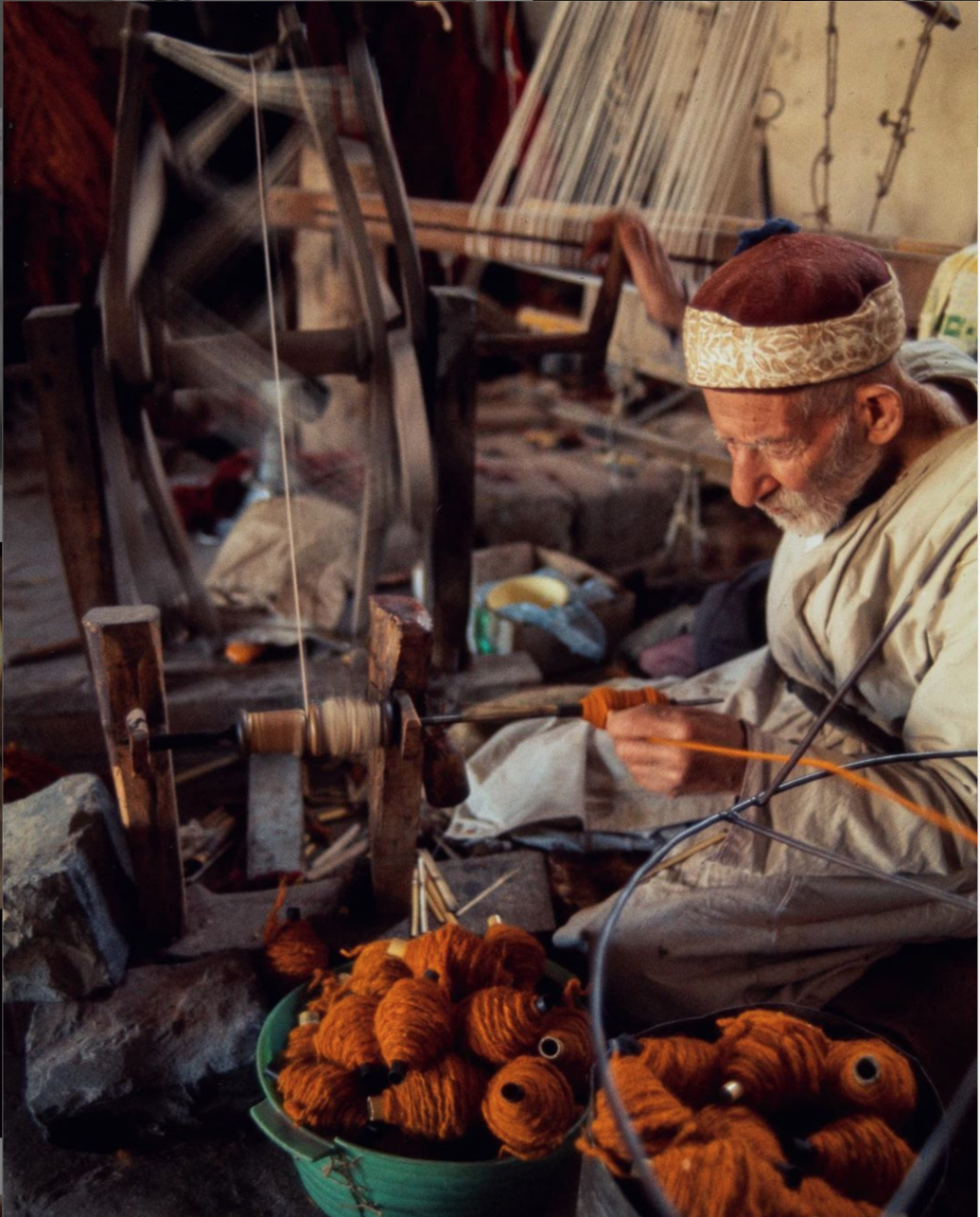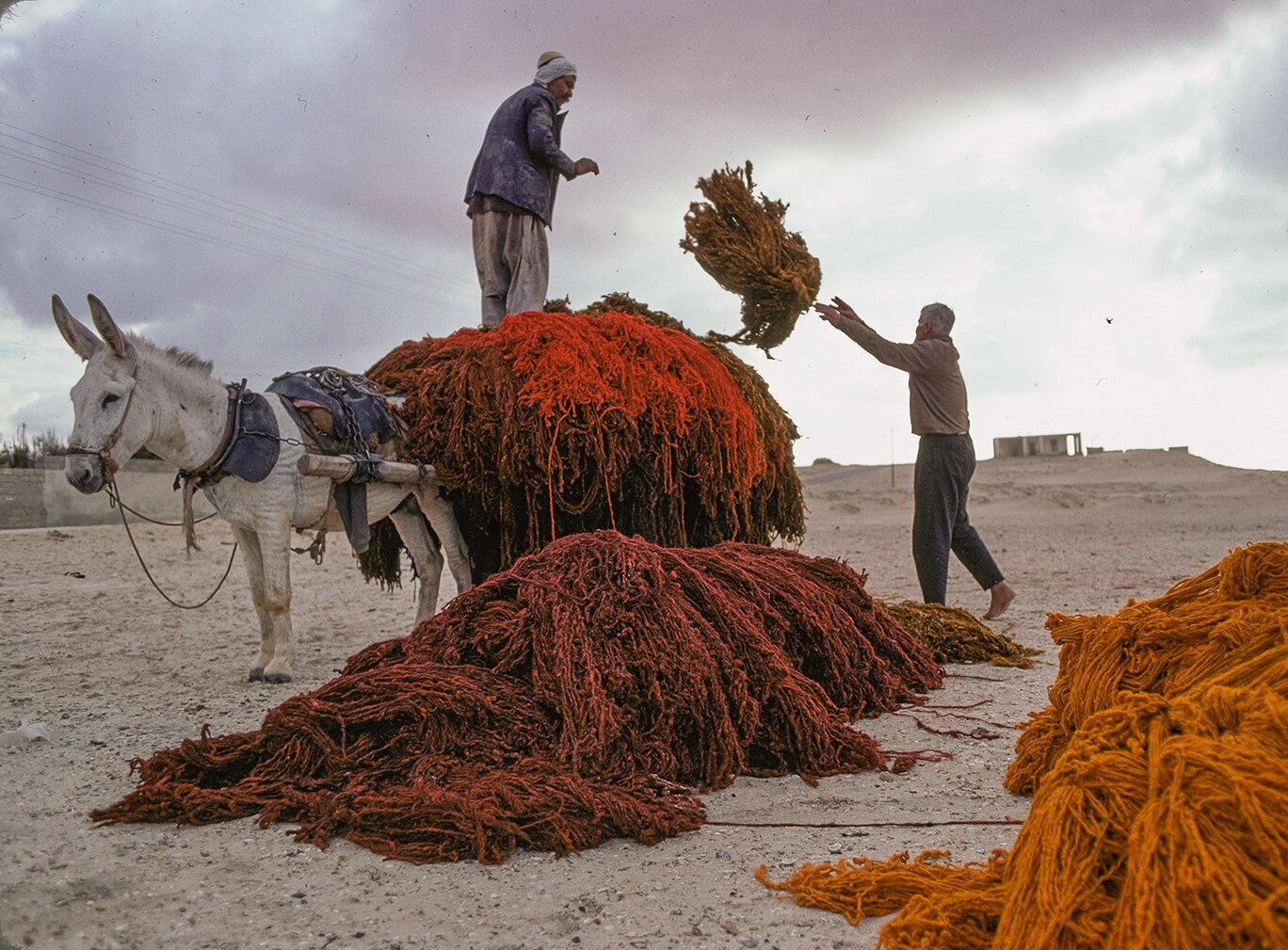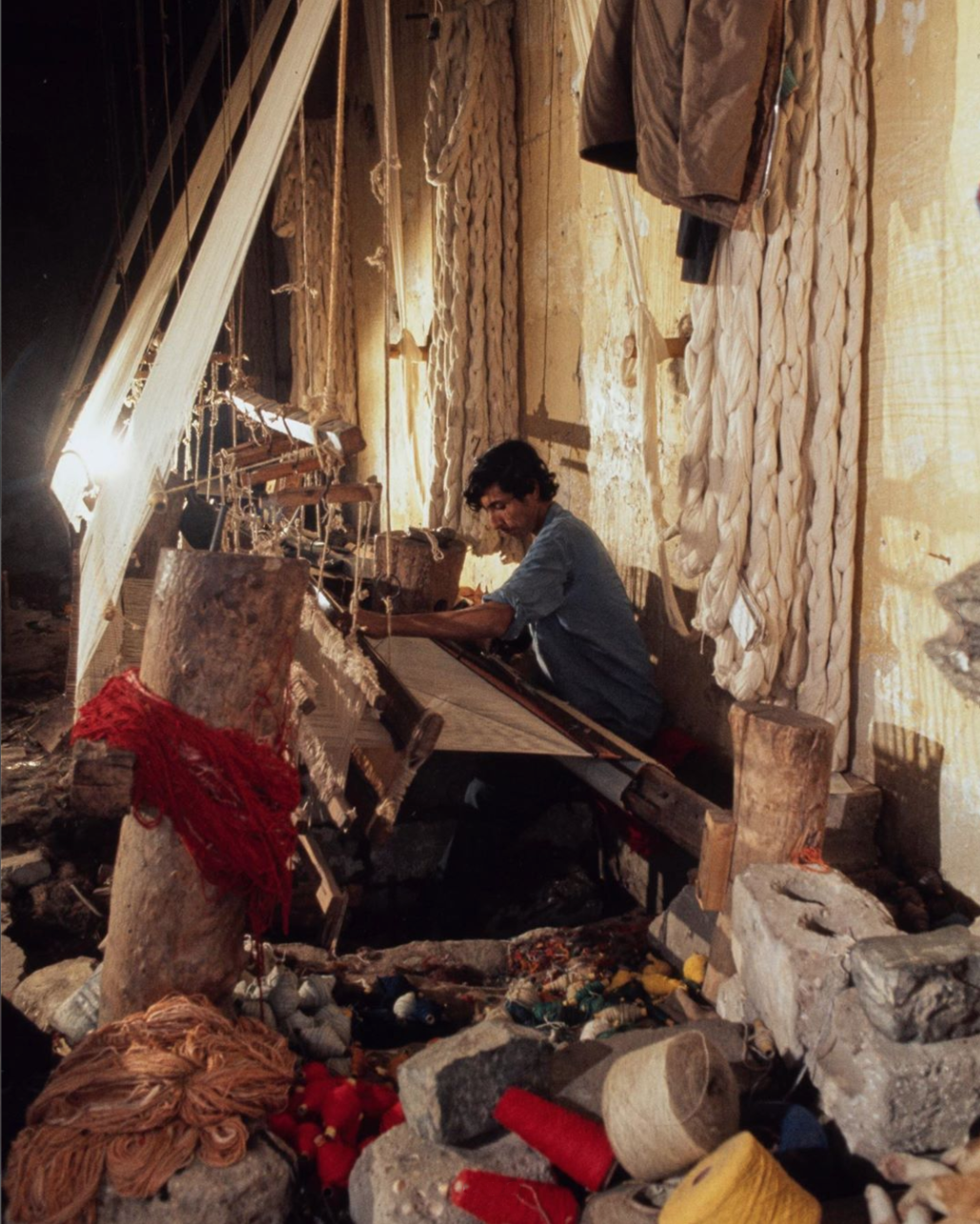Get Inspired
Nol: Weaving Threads of Palestinian History
Beginning as a community-based initiative to bring people together over shared struggles, we have grown into a collective dedicated to illuminating the extremely human nature of fashion and politics. Nöl Collective is far more than just a fashion brand: We work at the intersection of feminism, Palestinian culture, ethical fashion, and social justice.
At Nöl, we manufacture our apparel and accessories with small family-run businesses and women’s cooperatives across the West Bank and Gaza, supporting local production, talent, and craftsmanship.
Curious about our name? Here's the story.
a bit of background:

Before diving into the fate of the loom in Palestine, it is well worth taking a moment to explore the intricate process of wool to loom.
Nöl is the arabic word for "loom" (نول). A loom is a device used to weave cloth and tapestry. This manual instrument was a crucial element in Palestine’s textile history. In fact, Palestine has been popular in dyeing and weaving for centuries, with many textile practices centered on the loom.
The first stage is the preparation of the raw material, and it is either camel's hair, sheep's wool, or goat's hair. The colors of the raw wool are then separated from each other, then it is treated by drying and sending it to spin and converting it into threads.
The threads are then sent for dyeing to turn into bright colors, and then wash with the sea water of Gaza to stabilize the colors.
Dyes were produced from local plants and insects: red was made from pomegranate and madder root, blue from the indigo plant, yellow from grape leaves or saffron, black from walnut shells, and yellow-green from sumac. With time, many villages came to be associated with the use of certain colors and threads.
Using the loom, the threads are then woven into many things, including horse saddles, rugs, gowns, carpets, children's swings, etc.
In many areas, the dyeing was often left to men and the weaving to women or vice-versa, both tasks done in groups (as was the case for many processes from agriculture to cooking). It seems that this process an intimate and communal one, not only between people but between Palestinians and their land as well.
what happened to the loom?

Weaving was central to many areas of Palestine including Al Majdal, Gaza, Ramallah, Nazareth, Hebron and Nablus. Handwoven fabrics were largely linen or cotton—anything more expensive like silks was imported from Syria at the time. In fact, much of traditional Palestinian costume relied heavily on silk brocade fabrics imported from Syria, although this is not the case anymore.
The costumes and styles of the Galilee are one example of the collective regional textile industry. Cotton was grown in the Galilee, Silk imported from Syria, and linen from Egypt. The Galilee was also the source of the indigo and sumac dyes used for fabric used in costumes all over Palestine.
It's even said that the proximity of Syria to the North of Palestine, influenced the styles of costumes there. Much of this, of course, came to end with the Israeli occupation and the demolition of entire villages by Zionist militias in 1948.
In recent years, Syria’s textile industry has dwindled, leaving those interested to hunt for the fabric in old shops nestled within old cities across the Levant. Syrian silk brocade has sadly become a symbol of both a once-intimate relationship between Palestinians and Syrians and a contemporary world which looks to be only a shadow of what it once was.
Weaving in Palestine also dwindled for a number of reasons. Israel’s military occupation warped Palestinian culture and identity, leaving us to piece the puzzle together ever since—much like colonization did for cultures throughout the global south. For example, al-Majdal village, only twenty kilometers from Gaza, was one of the largest and most critical centers of weaving in the region. Up to the mid-19th century, it was still equipped with more than 500 active looms. In 1948, al-Majdal was demolished by Israelis and its inhabitants literally put onto a bus and driven to Jordan. Some decedents, who were then forced to call refugee camps in Jordan “home,” attempted to carry on the practice from there. The practice was not passed down to newer generations, however, and was largely lost.

Furthermore, under the weight of industrialization and globalization, manual looms were replaced with industrial looms. Those few weavers left in Gaza today face exceptionally difficult circumstances as they live in what can only be called an open-air prison, under siege for over a decade. Those weavers face difficulty in importing threads and in exporting products across an Israeli military checkpoint which does not even allow medical supplies across.
The team at Nöl Collective fell deeply in love with the loom because signifies a part of our identity lost to history. It also signifies the intimate connection between Palestinians and their land, as they use their livestock, plants, insects, and sea water to create beauty. The loom was and is a vehicle for this collective creative effort. And just as a loom brings threads together to create one beautiful piece, we also dedicate ourselves to bringing people together for something greater.
We hope that this brief overview will bring the term (نول) into your vocabulary and its history into your conversations. Do not mistake this instrument as a relic of the past, simply something upon which to create fabrics or rugs—but rather use this as a lens to begin exploring the intricate intersections of femininity, labor, earth, art, colonization, industrialization, displacement, and persistence.
have any more information or resources? comment below!
Sources
https://zochrot.org/ar/village/49283
https://www.nawa.ps/ar/post/21886
https://www.paljourneys.org/en/timeline/highlight/14497/palestinian-embroidery

















